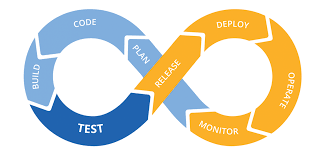1. Architecture and Design Considerations:
Begin by outlining a scalable architecture. Utilize MVC's separation of concerns to organize code into models, views, and controllers. Implement design patterns like Repository Pattern, Dependency Injection, and Service Layer to enhance scalability and maintainability.

2. Optimizing Performance:
Efficient code and optimized queries are key. Utilize caching mechanisms, minimize database trips, and implement asynchronous programming to improve application responsiveness and handle concurrent requests.

3. Scalable Database Design:
Choose a scalable database architecture that aligns with application requirements. Employ database indexing, partitioning, and replication strategies for improved performance and scalability under heavy loads.

4. Horizontal Scaling with Load Balancing:
Leverage load balancers to distribute incoming traffic across multiple servers. Configure your application for horizontal scaling by deploying it on multiple servers, ensuring high availability and improved performance.

5. Caching Strategies:
Implement caching mechanisms at various levels (server-side caching, client-side caching, and distributed caching) to reduce the load on the server and enhance overall application performance.

6. Monitoring and Scaling Strategies:
Utilize monitoring tools to analyze application performance and identify bottlenecks. Implement auto-scaling mechanisms that dynamically adjust resources based on traffic fluctuations to ensure optimal performance.

7. Security Measures:
Prioritize security measures by implementing best practices like data encryption, input validation, and authentication/authorization mechanisms. Ensure secure communication between components and protect against common web vulnerabilities.

8. Testing and Continuous Integration/Deployment (CI/CD):
Implement a robust testing strategy to identify scalability issues early in the development cycle. Adopt CI/CD pipelines to automate testing, deployment, and monitoring, ensuring consistent quality and scalability of the application.

9. Future-Proofing and Flexibility:
Design your application with flexibility in mind. Embrace modularization and loosely coupled components to adapt to future changes and scalability requirements.
Building scalable web applications with .NET MVC involves a holistic approach encompassing architecture, performance optimization, database design, scalability strategies, security, and automation. By integrating these practices, developers can create resilient, high-performance applications capable of accommodating growth and delivering exceptional user experiences.



You must be logged in to post a comment.